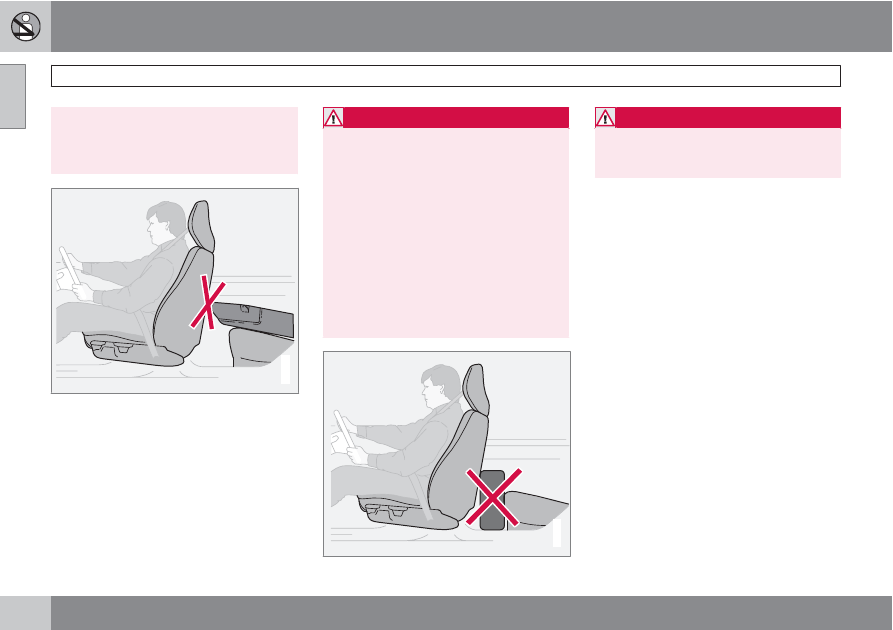Volvo C30 (2013 year). Instruction - part 2

01 Safety
Whiplash Protection System
01
36
Certain components in the WHIPS sys-
tem may need to be replaced.
•
Do not attempt to service any compo-
nent in the WHIPS system yourself.
G020126
WARNING
•
Any contact between the front seat
backrests and the folded rear seat
could impede the function of the WHIPS
system. If the rear seat is folded down,
the occupied front seats must be
adjusted forward so that they do not
touch the folded rear seat.
•
If the rear seat backrests are folded
down, cargo must be secured to pre-
vent it from sliding forward against the
front seat backrests in the event of a
collision from the rear. This could inter-
fere with the action of the WHIPS sys-
tem.
G020125
WARNING
Boxes, suitcases, etc. wedged behind the
front seats could impede the function of the
WHIPS system.